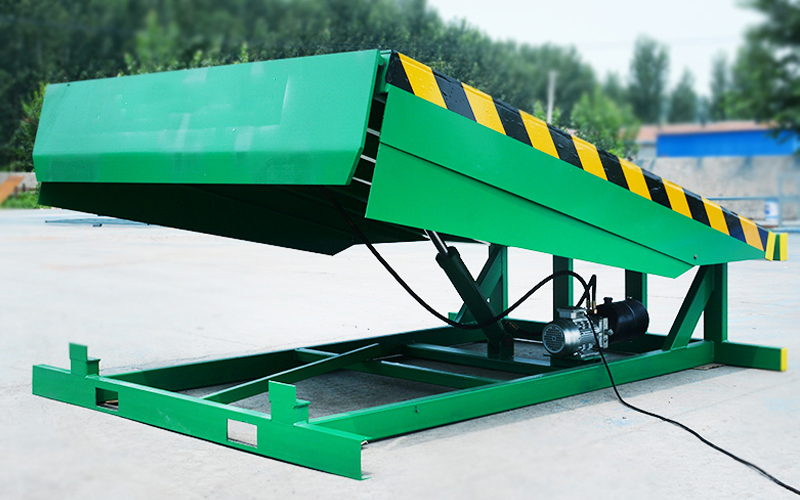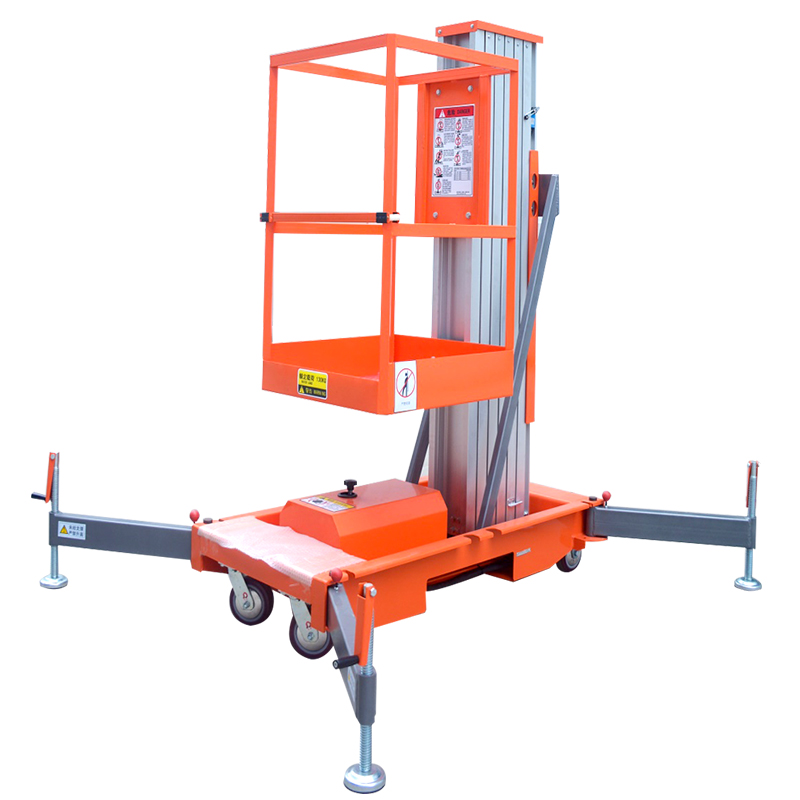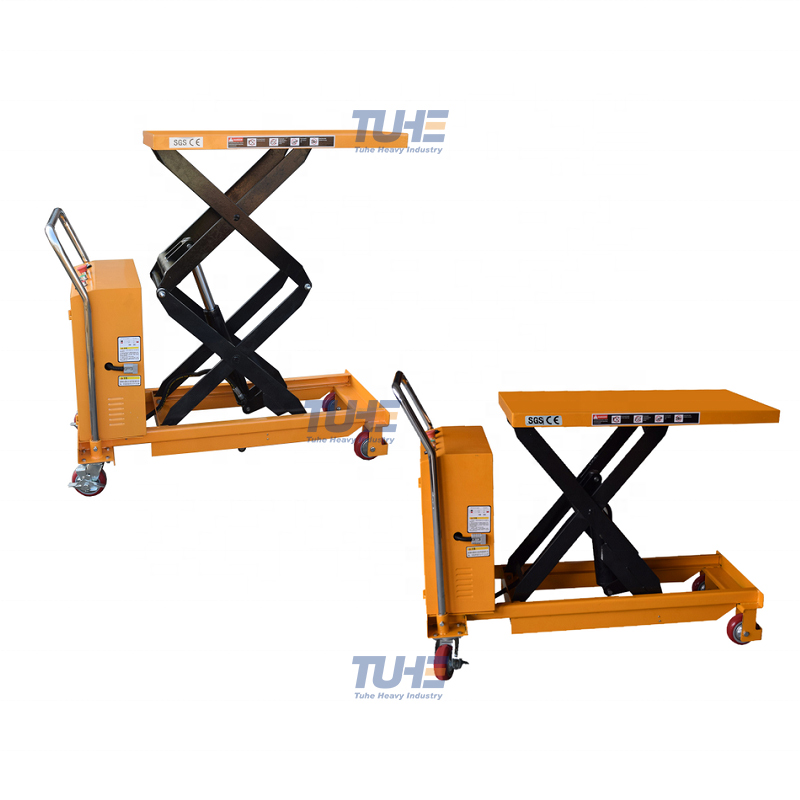![]() Hydraulic elevator configuration.pdf
Hydraulic elevator configuration.pdf
1. What is home elevator?
Home elevator is also called villa elevator, which refers to the elevator installed in the private residence for family members. Common types are traction elevator, screw elevator and hydraulic elevator. With the improvement of people's living standards, more and more people have their own houses, so it becomes very popular to install an elevator to facilitate people and goods to go upstairs and downstairs.
2. What is the difference between home elevator and passenger elevator?
a. Different installation positions
The home elevators are installed in private residences, while the passenger elevators are installed in residential areas or public places
b. Different objects
The domestic elevator is only for family members, and the passenger elevator is for everyone
c. Different acceptance standards
In most countries and regions, domestic elevators are private property and do not require the approval and acceptance of relevant departments. Passenger elevators need to be approved and accepted by relevant departments, and regularly inspected and maintained.
d. Different parameter configurations
The recommended speed of the home elevator shall not exceed 0.4m/s, the load shall not exceed 400kg, and the height shall not exceed 12m. Passenger elevators do not have these restrictions. The home elevator is a 100% customized product. All the size parameters, car decoration, etc. are customized according to the preferences of the residence and customers. The passenger elevator is generally a hairline stainless steel car, and the size is also a standard size, which does not accept single customization.
No. | Specifics | Home elevator | Passenger elevator |
1 | Use range | Private | Public |
2 | Load | 250-400kg | 450-2500kg |
3 | Speed | 0.4m/s | 1.0-18.0m/s |
4 | Door method | Manual/automatic door | Automatic door |
5 | Drive method | Machine room less traction type, hydraulic type, screw type | Machine room less traction type, machine room traction type, hydraulic type |
3. What are the common types of home elevators?
a. Hydraulic
The hydraulic elevator is an elevator that uses the hydraulic power source to put the hydraulic oil pressure into the oil cylinder to make the plunger move in a straight line, and indirectly makes the car move through the steel wire rope. In brief, the hydraulic elevator refers to that the hydraulic pressure is put into the oil cylinder through the pump station, the oil cylinder rises, and the car is lifted indirectly through the high-strength row chain/wire rope. The elevator descends by pressing the oil cylinder to drain oil through the self weight of the car. The hydraulic home elevator belongs to the traditional home elevator design. Due to the rapid development of the villa elevator industry in recent years, the design and technology of the hydraulic elevator have also been greatly improved on the basis of the traditional elevator. Not only is the performance more stable, but also the appearance is more beautiful and diversified.
b. Traction
One end of the traction wire rope is connected to the lift car through the traction wheel, and the other end is connected to the counterweight device. In order to make the lift car and counterweight in the elevator shaft run along the guide rail in the elevator shaft without rubbing, a guide wheel is placed on the traction machine to separate them. The gravity of the lift car and the counterweight device makes the traction wire rope compress in the traction sheave groove to generate friction. In this way, the motor rotates to drive the traction wheel to rotate, drive the steel wire rope, and drag the car and counterweight to make relative movement. That is, lift car rises and counterweight falls; The counterweight rises and the lift car descends. Therefore, the car moves up and down along the guide rail in the elevator shaft, and the elevator performs the vertical transportation task.
c. Screw
The screw elevator uses the motor as the power source. The motor is connected to the nut through the belt, and the nut tooth pattern and the screw tooth pattern mesh with each other. The nut is connected to the car. When the motor is working, the screw is rotated by the motor to drive the nut to move on the screw, thus driving the car to move up and down. The safety is high. Even if the power is lost, the screw will drive the motor to do greater negative work. The drop will be very slow and will not fall freely.
4. What are the advantages and disadvantages of different types of domestic elevators?
a. Hydraulic home elevator
Advantages: The machine room is set flexibly. The hydraulic elevator relies on the hydraulic pump station and the oil pipe to transmit the power. It does not need to set the machine room on the upper part of the shaft in the traditional way.
The elevator shaft has a high utilization rate. The hydraulic elevator is not equipped with a counterweight device, so it can improve the utilization rate of the elevator shaft area.
The structural strength of the elevator shaft is low. Due to the self weight and load of the hydraulic elevator car, the guide rail frame is fully applied to the foundation of the shaft pit and each floor slab through the hydraulic cylinder, with low requirements on the building performance of the shaft wall and top. Only a single bearing wall is required to bear the force, and guide rail supports are set. The top floor can be installed when the floor height is more than 2 meters. The requirements for the top and building foundation pit are very low. The bottom pit can be at least 10 cm deep, or it can be installed without a bottom pit.
Stable operation and comfortable ride. The hydraulic system transmits power evenly and stably, and the valve body of the pump station can realize stepless speed regulation. The elevator running speed curve changes smoothly, so the comfort is better than the traction speed regulating elevator.
Good safety, high reliability and easy maintenance.
Low failure rate. Due to the advanced hydraulic system and good electro-hydraulic control mode, the elevator operation failure can be minimized.
Good energy conservation. When the hydraulic elevator goes down, it is driven by the pressure generated by the self weight of the lift car, which can save energy.
Disadvantages: The motor runs noisily when it rises, but this situation can be improved by placing the pump station far away.
If the seal ring is not replaced on time after a long time of use, oil leakage may occur.
The speed is slow, generally not more than 0.3m/s.
b. Traction home elevator
Advantages: high safety performance. The traction elevator has experienced continuous development and iteration in recent years, so its process is very mature and safe.
The noise is low. The main engine of the main traction elevator does not need to be equipped with a deceleration box. It relies on frequency conversion and pressure change to control the speed of operation. When it is used, it will not hear the noise from friction between gears. There is no problem in installation and commissioning. It works stably and safely, and there will be no turbulence.
The operation is stable. The way of balancing the lift car of the traction elevator is derived from the counterweight, which works on the principle similar to the moving pulley. Therefore, the core advantage of this elevator is its moving pulley structure, which can greatly enhance the durability of the elevator, thus extending the service life.
Disadvantages:
The requirements for building structures are relatively high. The height of the top layer must be at least 2700mm before normal installation. And the depth of the foundation pit of the building shall not be less than 25cm. The faster the operation speed is, the higher the requirement for the pit is.
It takes up a lot of space. Because traction elevators rely on counterweights to take off and land, they need to give counterweights a certain amount of space. In addition to the car body of the elevator itself, they form a double track structure, which takes up at least twice as much space.
The installation process is complicated because the traction elevator itself has complex and diverse equipment structures, drives, controls, safety protection and other equipment structures, which are numerous and complex, because the installation is relatively difficult.
c. Screw home elevator
Advantages: The space utilization rate is high. Because screw elevators only rely on nuts, screws and motors when moving, unlike traction elevators, they also need to be equipped with wire ropes, counterweights and other tools. At least 1000 * 1000mm space is required to configure a screw elevator.
The requirements for buildings are low. In order to ensure the safety performance, normal elevators will be equipped with buffer devices such as reducers, which have certain requirements for the building structure. However, screw elevators themselves have slow working speed and high safety performance, so they do not need these devices. Therefore, the requirements and restrictions for the building structure are not so high, nor do they need elevator foundation pits like traditional elevators. Only one wall is enough for installation.
The safety factor is high. Even if the power is lost, the screw will drive the motor to do greater negative work. The drop will be very slow and will not fall freely.
Disadvantages:
The noise is loud, because the screw elevator motor and the entire lifting platform are linked, and the motor will move with the car, so the noise is difficult to avoid.
The speed is the slowest. Because of the screw type mechanical structure, the elevator can not speed up. It can only run up and down at the speed of 0.1-0.2./s.
The lifting height is limited. Generally, there are three floors at most. If there are more than three floors, screw elevators are not recommended.
5.How to choose a home elevator?
a. According to your budget, the price of screw elevator is generally higher than that of traction elevator and higher than that of hydraulic elevator. Take the elevator on the second floor for example, the price of screw elevator is about $15000-$25000, the price of traction elevator is about $10000-$20000, and the price of hydraulic elevator is about $5000-$10000.
b. Depending on the installation environment,
There are professional elevator shafts. Traction elevators are the most suitable for installation, and hydraulic elevators can also be used. It is not recommended to install screw elevators, because screw elevators are generally platform type, and there is no complete car, so it is inappropriate to install them in civil engineering elevator shafts.
Install an elevator in the middle of the stairs. If the space is large and the ground and floor of each floor are concrete, consider installing a traction elevator. If the space is small, install a hydraulic elevator, because the hydraulic elevator can be installed without elevator shaft, and the same space size can be the largest car.
Install an elevators in the hollow space, screw elevators or hydraulic elevators can be considered. Traction elevators are not recommended because they do not have enough support.
Install an elevators outdoors, all three types of elevators can be installed, but must be waterproof and windproof.
c. According to the construction difficulty, if you plan to DIY an elevator by yourself, the hydraulic elevator is the only choice because of its simple structure and the lowest installation difficulty, while the traction elevator and screw elevator must be installed by a professional construction team.
6.What is the best 10 home elevator brands?
① Stiltz
Stiltz Home Elevators is a local home elevator supplier in the United States. It provides a new type of elevator. It does not need a professional shaft, a machine room or a pit. It is very flexible in installation. It can be installed at any position of the villa, and can be installed directly with floor openings. The elevator rotates above to drive the chain to pull the platform up and down, which is similar to the principle of a forced drive elevator, but simpler than a forced drive elevator. The disadvantage is that the price is very high, and it can only be installed in a two storey building. If it is more than two storeys, it will not work, because only two columns are used as guides and support points, they offers a simple and easy way of moving safely between floors. Considered a practical and attractive alternative to a stair lift, a Stiltz Home Elevator keeps you living independently in the home you love without the need to move house. Whether you live in a town home, modern colonial or waterfront condo, our residential elevators can be installed in just one day in virtually any two-story home in the USA.
② Pneumatic vacuum elevators
PVE is the world's leading vacuum elevator manufacturer. The vacuum elevator uses the vacuum pump to form vacuum above the car, and the lower part of the car is connected to the atmosphere as atmospheric pressure. The two parts are sealed by the sealing ring on the top of the car
It is composed of four parts: 1 - atmospheric pressure zone; 2 - Car seal; 3 - Vacuum zone; 4 - Vacuum pump.
The vacuum elevator has a beautiful appearance. It is the lightest and most expensive elevator at present.
The PVE30 is the smallest elevator in the world, yet it is just as capable as other residential elevators that are much larger and much more expensive. The PVE30 elevator has a 350lb (159kg) lift capacity and is capable of up to 50 ft. (15m) of rise over as many as five stops. With a 30 inch outside diameter, these elevators are small enough to fit in even the most modest-sized home.
③ ACME elevator
ACME Home Elevator is a premier provider of home elevators, stair lifts, vertical platform lifts, and dumbwaiters. Most services are provided in California. Home elevators are only part of their business, not all.In 2018, ACME Home Elevator became a division of Stannah, a 150 year old family business and a world leader in the lift industry Since then, ACME has operated as an extension of Stannah, specializing in the same mobility and accessibility equipment we’ve offered for decades. Their range includes stair lifts, wheelchair lifts, home lifts and residential elevators. They will soon be changing our name and coming in under the Stannah banner.
④ Cibes
CIBES was founded in 1947. Its factory and headquarters are located in Yeffler, Sweden. It has 14 subsidiaries and more than 200 dealers worldwide. It is a professional supplier of screw elevators. At Cibes Lift Group, we focus on you and all parts of your life. We care about you and the planet. We respect your need for peace and quiet. We care about your comfort at home. This inspired us to develop the EcoSilent drive system. The result is a quiet revolution for screw-driven lifts and for your home. The EcoSilent drive system, the exclusive patented technology of CIBES, can save energy.The price is relatively high. The price of the second floor elevator is about 100000 to 150000 dollars.
⑤ Garaventa
Garaventa is a professional household elevator manufacturer from California. They provide traditional traction elevators and hydraulic elevators. They have offices in Southern California and Northern California respectively.
Garaventa has focused and specializes in lift conveyances since 1928. Garaventa elevators are innovative products that offer unique solutions with creativity in mind to suit your design and style. They offer a wide range of wall materials, fixture finishes, and their 3-Speed sliding doors. Garaventa elevators are a great solution for your accessibility or lifting needs.
Garaventa Lift is an elevator company in North America. It has two offices in the United States and Canada. Its products are mainly traditional traction elevators, and it also operates screw elevators.There are safety codes and standards which are published specifically to regulate this equipment. All home elevators manufactured by Garaventa Lift and installed by authorized Garaventa Lift representatives meet or exceed all local and national safety code requirements.
⑥ SAVARIA VUELIFT
Savaria is an elevator brand from Canada, mainly engaged in home elevator and wheelchair lift. Its products are mainly hydraulic and still driven by chains.
An extraordinary home elevator, the Savaria Vuelift is a panoramic glass or acrylic lift with integrated hoistway. Offered in a round or octagonal shaped design, the Vuelift offers great flexibility for placement in the home due to its 360 clear construction - beautiful even in the center of a room, attached to a balcony or mezzanine, or in the center of a spiral staircase.
⑦ Tuhe lift
Tuhe lift is a famous home elevator brand from China. Its main business is traction and hydraulic home elevators, including the recently popular platform elevators. Tuhe lift has the first market share in China and continues to export to all parts of the world. It has partners in many countries.
Tuhe lift is famous for its high cost performance and excellent product quality. Through its deep cultivation in the industry in recent years, Tuhe lift has many patented technologies and exclusive elevator decoration, which are loved by consumers all over the world,
Made in China products have the highest cost performance, so if you consider installing an elevator for your house, and it is difficult to buy an elevator from the local elevator supplier in the budget, you can contact Tuhe to find an elevator that you are satisfied with.
⑧ Arrowlift
Arrow lift is a very famous domestic elevator brand in the United States, mainly engaged in small size domestic elevators. There are offices in six American cities.Their main product is shaftless home lift, Shaftless elevators eliminate the need for a full elevator shaft to be built. This often lowers the overall construction costs—which can vary depending on the home and model selected.Since 1985, Arrow Lift has been in the business of helping our customers overcome barriers. From stair lifts to custom home elevators and commercial access solutions, we are committed to being the best in our industry and providing you with the best value in the market
⑨ Terrylifts
Terrylifts is a manufacturer of home elevators from the United Kingdom. It is mainly engaged in various small home elevators with small floor space and simple installation. It's OK to install elevators in old houses.The Terry Lifestyle lift is designed to enhance your lifestyle and your home, offering freedom and flexibility.
We understand how precious space is in your home. That’s why the Lifestyle Lift features a small footprint, taking no more space than an arm chair. You will have the freedom to place the lift almost anywhere in your house!
Design-wise, there’s plenty of choice to be had. The lift can easily be customised with your choice of colours, door options, glazing units, LED lighting and a selection of floor coverings to match your home’s existing decor perfectly.
⑩ Metron
Metron Automation S.A. is a home elevator in Grace, was founded in 1995 and since 2000 is asubsidiary of ALUMIL Group. The company's main field of expertise is the design and construction of complete elevatorsystems. Several years of experience in the sector, combined withthe capability of strategic response to the diverse conditions ofthe contemporary competitive environment, has resulted inMetron's successful consolidation in numerous internationalmarkets, apart from the Greek market.
Melton's main products are hydraulic, including hydraulic home elevator, hydraulic car parking lift, and hydraulic goods lift.
7. How Much Does a Home Elevator Cost?
There is a pretty wide range, depending on a number of factors, such as the model, size, stops and features you select will influence the price of your home elevator.
Because there are so many variables at play, the cost of a home elevator varies greatly.If you want to know how much does a home elevator cost, please don't hesitate to schedule a consultation, we will give you a detailed quote in very short time.

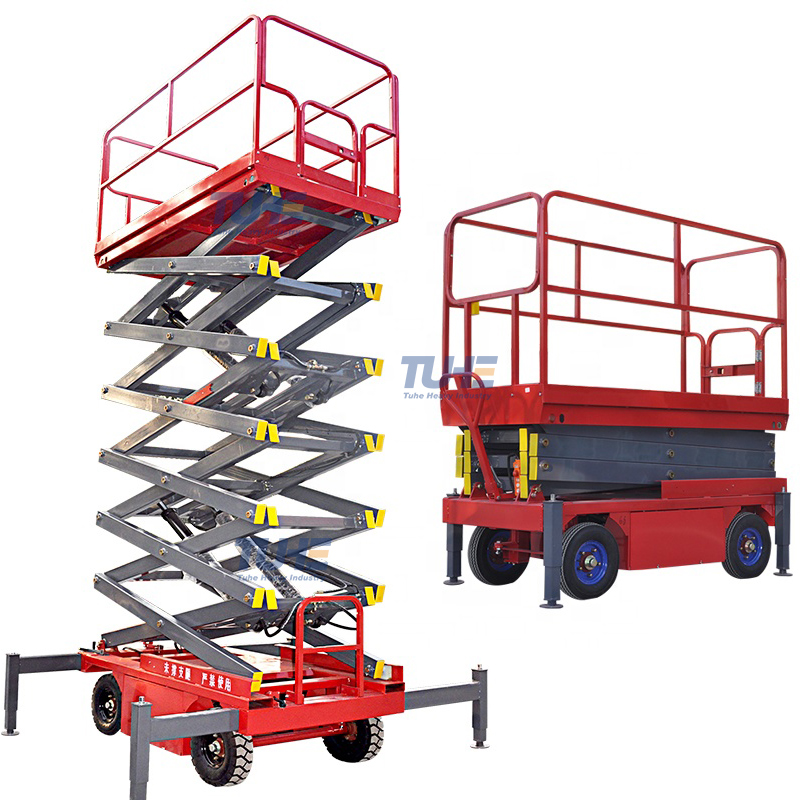
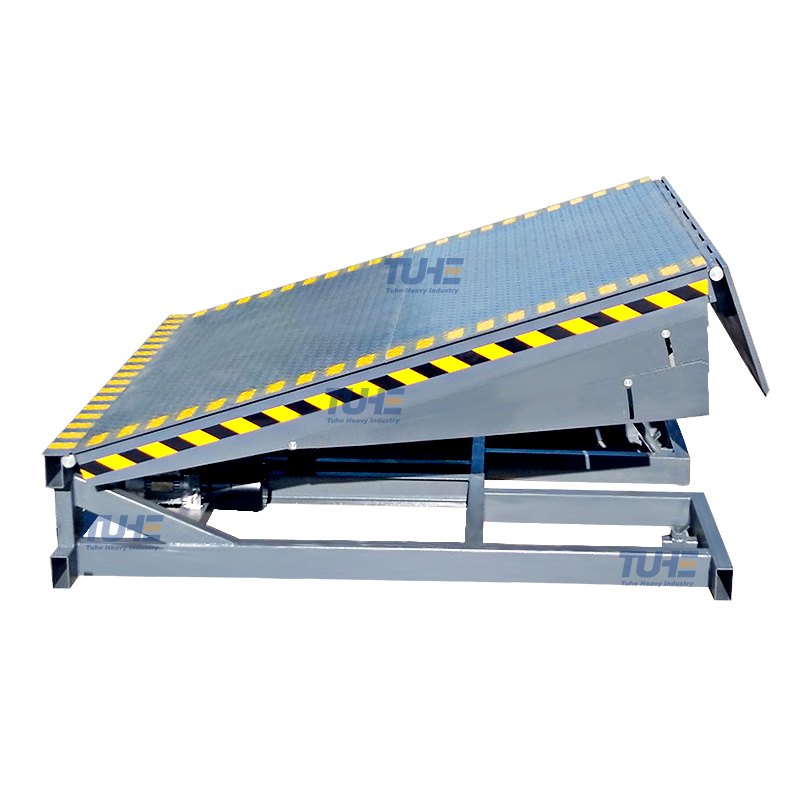
660.webp)
503.webp)
695.webp)
